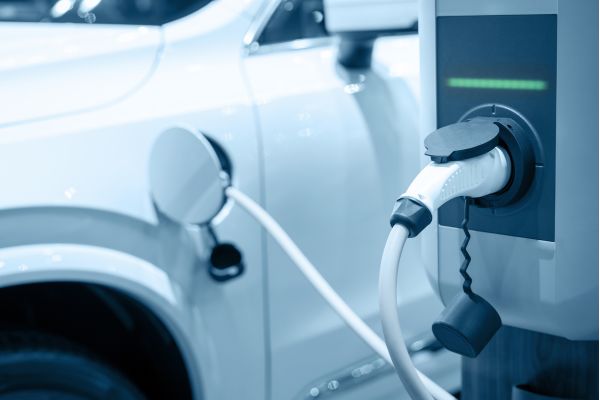In the dynamic realm of automotive engineering, a profound transformation is underway as electric vehicles (EVs) emerge as the vanguards of a sustainable future. Within this electrified revolution, electric sports cars have emerged as the embodiment of exhilarating performance, breaking the barriers of traditional automotive norms. As the pursuit of electrification intensifies, battery technology stands as a critical pillar, underpinning the evolution of electric sports cars. This comprehensive exploration delves into the fascinating journey of battery technology in electric sports cars, tracing its path from humble beginnings to cutting-edge advancements, and envisioning its promising future.
The early days of electric sports cars saw pioneers experimenting with nickel-cadmium (NiCd) and nickel-metal hydride (NiMH) batteries, laying the foundation for electrification. Subsequently, the advent of lithium-ion (Li-ion) technology proved to be the quantum leap that redefined the potential of electric sports cars. The inherent high energy density of Li-ion batteries unlocked a new era of electrifying performance and extended driving ranges, propelling electric sports cars into the limelight of high-performance motoring.
As the quest for greater efficiency and performance continues, solid-state batteries emerge as the next frontier in battery technology. With their potential to overcome limitations of traditional Li-ion batteries, solid-state technology promises lighter, more efficient, and faster-charging power storage solutions. The fusion of solid-state batteries and advancements in charging infrastructure marks the relentless pursuit of addressing range anxiety and transforming electric sports cars into a practical and sustainable choice for driving enthusiasts.
In this captivating journey, we navigate through the historical milestones, breakthroughs, and future prospects of battery technology in electric sports cars. The fusion of engineering brilliance, environmental consciousness, and the pursuit of thrilling performance has driven relentless innovation in battery technology, forging a new era where electric sports cars reign supreme in the ever-evolving landscape of high-performance motoring.
The Early Days – From Nickel-Cadmium to Nickel-Metal Hydride
The advent of electric sports cars traces back to the late 20th century, where early pioneers experimented with various battery chemistries. In the 1970s and 1980s, nickel-cadmium (NiCd) batteries were among the first to power electric sports cars. While NiCd batteries offered a decent energy density and charging capabilities, they were plagued by issues like cadmium’s toxicity and the notorious “memory effect.”
The 1990s witnessed a shift towards nickel-metal hydride (NiMH) batteries, offering improved energy density and eliminating the memory effect. As a result, electric sports cars equipped with NiMH batteries demonstrated better performance and a more extended driving range, marking a significant step forward in battery technology for electric vehicles.
The Rise of Lithium-Ion – A Game-Changer for Performance
The breakthrough that revolutionized battery technology and propelled electric sports cars to new heights came with the advent of lithium-ion (Li-ion) batteries. In the early 2000s, Li-ion batteries began to find their way into consumer electronics, paving the way for their application in electric vehicles. The inherently high energy density of Li-ion batteries translated into a significant improvement in the performance of electric sports cars.
Lithium-ion batteries offered a crucial advantage – a higher energy-to-weight ratio, which allowed for lighter and more agile electric sports cars without sacrificing range. The introduction of Li-ion batteries in high-performance electric sports cars, such as the Tesla Roadster, marked a turning point, demonstrating that electrification could coexist with exhilarating performance. As Li-ion technology continued to evolve, electric sports cars experienced even greater performance gains and longer driving ranges, making them increasingly competitive with their internal combustion engine counterparts.
Beyond Lithium-Ion – Advancements in Solid-State Batteries
As the pursuit of higher energy density and faster charging capabilities continues, researchers and engineers have turned their attention to solid-state battery technology. Solid-state batteries promise to overcome some of the limitations of traditional Li-ion batteries, such as flammability and limited charging cycles. By replacing the liquid electrolyte in Li-ion batteries with solid materials, solid-state batteries offer enhanced safety, higher energy density, and potentially faster charging times.
The application of solid-state batteries in electric sports cars holds the potential to elevate their performance and range capabilities even further. With their reduced weight, improved thermal management, and increased energy density, solid-state batteries could push electric sports cars to new frontiers of speed and efficiency. While still in the research and development phase, solid-state battery technology represents the next significant leap in battery advancements that could shape the future of electric sports cars.
Addressing Range Anxiety – Advancements in Charging Infrastructure
In the early days of electric sports cars, range anxiety was a significant concern for drivers. However, the evolution of battery technology has been accompanied by advancements in charging infrastructure. The proliferation of fast-charging stations and the development of high-power charging networks have alleviated range anxiety and expanded the feasibility of long-distance travel for electric sports cars.
The introduction of ultra-fast chargers capable of delivering hundreds of kilowatts of power has reduced charging times significantly. For example, the Porsche Taycan and its 800-volt electrical architecture can charge from 5% to 80% in just 22.5 minutes at compatible charging stations. Such advancements in charging infrastructure have contributed to the growing acceptance and adoption of electric sports cars, making them a practical choice for both daily commutes and spirited drives.
Looking Ahead – The Future of Battery Technology in Electric Sports Cars
As electric sports cars continue to gain traction and capture the imagination of enthusiasts, the future of battery technology holds even greater promise. Ongoing research and development into solid-state batteries, as well as advancements in lithium-ion technology, are expected to push the boundaries of what electric sports cars can achieve.
Moreover, innovations such as vehicle-to-grid (V2G) technology, where electric vehicles can discharge energy back into the grid during peak demand, are expected to enhance the versatility and utility of electric sports cars. With the integration of renewable energy sources and smart grid technologies, electric sports cars are poised to become not only performance machines but also essential components of a sustainable and resilient energy ecosystem.
In conclusion, the evolution of battery technology in electric sports cars is a testament to the indomitable spirit of innovation and human ingenuity. From the early days of NiCd and NiMH batteries to the game-changing impact of lithium-ion and the promise of solid-state batteries, each phase of advancement has contributed to the transformation of high-performance motoring. As battery technology continues to progress, electric sports cars are on the cusp of a new era, where exhilarating performance and sustainability coexist harmoniously. The journey of battery technology in electric sports cars is far from over, and as the electric revolution accelerates, the future of high-performance electric vehicles promises to be nothing short of electrifying.
Conclusion
The evolution of battery technology in electric sports cars has been a journey of unprecedented innovation, driven by the relentless pursuit of electrifying performance and sustainable mobility. From the early days of nickel-cadmium and nickel-metal hydride batteries to the game-changing impact of lithium-ion and the promise of solid-state technology, each phase of advancement has left an indelible mark on the landscape of high-performance motoring. As we draw the curtains on this captivating exploration, the implications of these battery advancements reverberate far beyond the realm of automotive engineering.
The dawn of electric sports cars witnessed pioneers daring to challenge conventions and explore the possibilities of electrification. NiCd and NiMH batteries marked the initial steps, demonstrating the potential of electric vehicles to deliver exhilarating performance, albeit with inherent limitations. However, the advent of lithium-ion technology became the catalyst that unlocked new frontiers of electrification. Its remarkable energy density, reduced weight, and longer driving ranges thrust electric sports cars into the spotlight, capturing the imagination of enthusiasts worldwide.
Looking ahead, the journey of battery technology continues, and solid-state batteries hold the promise of taking electric sports cars to even greater heights. With the potential to address range anxiety, reduce charging times, and enhance overall efficiency, solid-state technology represents the next chapter in the electrified future of high-performance motoring. As advancements in charging infrastructure complement these battery innovations, electric sports cars are poised to become not just performance machines but integral components of a sustainable energy ecosystem.
Beyond the automotive industry, the impact of battery technology reverberates throughout society. The transformation of electric sports cars epitomizes the broader shift towards sustainable and responsible consumption, with the pursuit of thrilling performance no longer at odds with environmental consciousness. The electrified revolution is rewriting the narrative of high-performance motoring, steering it towards a future that embodies passion, innovation, and a commitment to a greener planet.
In conclusion, the evolution of battery technology in electric sports cars is a testament to the remarkable journey of human ingenuity and technological progress. From the pioneers who paved the way to the engineers and researchers driving the cutting-edge advancements, every step in this journey has shaped the present and laid the foundation for an electrifying future. As electric sports cars continue to redefine the boundaries of performance, one thing is clear – battery technology is the backbone of this electrified revolution, propelling us towards a future where the thrill of high-performance motoring meets the responsibility of sustainable transportation. The road ahead is electrifying, and with each charge, electric sports cars carry us closer to a greener and more exhilarating tomorrow.



